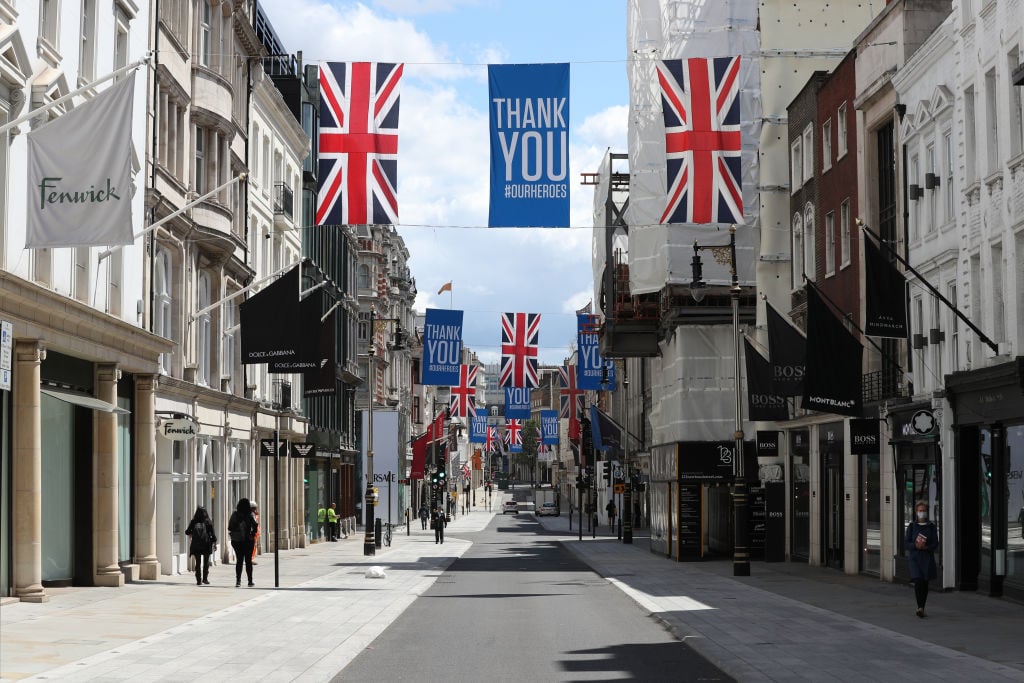
As the UK begins lightening lockdown restrictions this summer, government officials will allow commercial galleries to reopen on April 13. But while many in the trade are relieved and enthusiastic, one thing remains clear: the city center has been utterly changed by the pandemic.
Several large retail spaces on London’s Oxford Street, such as Topshop and Debenhams, will not be reopening, and other, smaller retail shops quietly closed throughout the past year. Commercial galleries have weathered the pandemic slightly better, and in some cases are moving in to replace vacant stores.
But in London, nothing happens in isolation, and change always requires the collaboration of landowners, local councils, town planners, and businesses.
What does that all mean for the commercial art world?
The high-end heart of the city’s art industry, Mayfair, has been undergoing changes for a few years. Since 2017, Cork Street Galleries, a newly built complex reserved for arts business and galleries, has been hosting nonprofits like Studio Voltaire and the Camden Arts Centre, as well as commercial enterprises like Goodman Gallery, Lisson Gallery, and Sadie Coles HQ.
Now, Frieze will be moving into No. 9 Cork Street permanently to host a rotating roster of international galleries over three 6,400-square-foot galleries. The project opens in September to coincide with Frieze London, and was already in the cards prior to the pandemic.
Frieze is signing a long-term lease with London’s Cork Street Galleries in Mayfair. Photo courtesy of Cork Street Galleries.
“It stems from many years of running Frieze London, and seeing the experience international galleries have,” Victoria Siddall, the company’s board director, told Artnet News. “We thought a space like this, that offered flexibility to galleries all over the world, would be appealing for people who don’t necessarily want to have a permanent space here.”
Surprisingly, despite the near-universal economic downturn, some London galleries have upgraded or opened new premises. Among the galleries that have moved in the past year are TAFETA, which moved to Bloomsbury; Clarendon Fine Art, which has opened a branch on Upper Street in Islington in recent months; Belmacz, which heads to Davies Street; and the new gallery Cornucopia, which has taken over the Sassoon Gallery space under the arches at Peckham Rye.
East London’s Emalin gallery moved from its long-term location in Shoreditch to a larger, historic space in the same area vacated by a board game company during the pandemic. It was built by Lazarus, a tailoring company, in the 1880s before being remade into a small department store in the 1920s. In more recent times, it was the studio of British Indie legend Matt Johnson of The The.
Emalin’s founders and directors Leopold Thun and Angelina Volk. Courtesy the gallery.
Emalin co-director Leopold Thun says his gallery is taking a leap of faith by investing in London.
“We feel that our generation needs certainty, rather than more doubt,” Thun told Artnet News. “[This is] our way of [saying] we believe that London will remain relevant in the cultural landscape, and that there’s still a lot that we can do.”
The center of London is owned largely by historic estates, the most famous being the Portman Estate. As landlords, estates have a lot of power over the neighborhood. Cork Street, for example, is run by the Pollen Estate, which for 100 years has encouraged galleries to open in the area.
“The pandemic has accelerated changes in many industries that were already underway,” Pollen Estate stock property director Julian Stocks told Artnet News. “It has also shown us that while the digital world has an important role in selling art, artists and galleries will always require great spaces to show work.”
Bringing people back into the center will depend in part on events like Mayfair Art Week and the inaugural London Gallery Weekend, but there are other factors involved as well.
A campaign mounted by Westminster Labour to fill at least one of the large, vacant sites on Oxford Street with a cultural space, in conjunction with existing plans for office space, is gaining momentum.
In recently developed areas, such as Kings Cross and Barking & Dagenham, public art has enlivened outdoor spaces, helping bring people into shops and increasing turnover.
“We know from what goes on in London and other major cities that arts and culture are huge attractions for people,” Siddall said. “I think any wise government would be embracing that at the moment, and thinking about how they can invest in art and culture [to help the] regeneration of cities.”